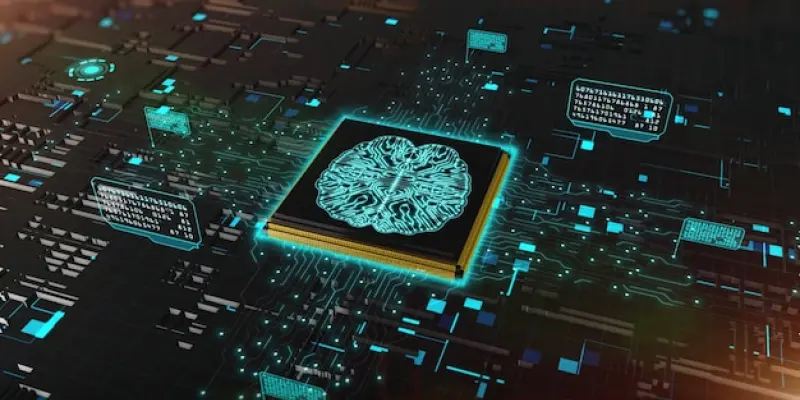The race to enhance memory technologies has reached new heights with the introduction of HBM4 and HBM4e, the latest advancements in high-bandwidth memory (HBM) driven by the intense competition in the AI accelerator market. At Nvidia’s GTC event, leading memory manufacturers, including Samsung, SK Hynix, and Micron, unveiled their next-generation HBM solutions with promises of substantial upgrades in memory density and bandwidth when compared to the current HBM3e standard. These innovations are poised to significantly boost AI performance, catering to the ever-increasing demands of advanced AI workloads in data centers.
Advancements Unveiled at GTC
SK Hynix revealed a 48GB HBM4 stack composed of 16 layers, each incorporating 3GB chips operating at a remarkable speed of 8Gbps. Similarly, Samsung and Micron presented their configurations, with Samsung pushing the envelope further by targeting speeds of 9.2Gbps. Within the next year, it is expected that 36GB stacks will become the industry standard. Micron has claimed that its HBM4 technology will offer a performance boost exceeding 50% compared to HBM3e.
Looking further ahead, HBM4e plans are even more ambitious, with each DRAM layer reaching 32Gb. This advancement will push stack capacities to an astounding 48GB and 64GB, with speeds ranging between 9.2Gbps and 10Gbps. SK Hynix has hinted at the possibility of achieving stacks with over 20 layers, which could translate to memory capacities soaring up to 64GB. Such monumental advancements are crucial for supporting Nvidia’s future Rubin GPUs for AI training, which are projected to use 16 stacks of HBM4e and reach an impressive 1TB of memory per GPU.
Implications for AI Performance Scaling
The ambitious innovation is not just about the memory density but also the bandwidth capabilities. The Rubin Ultra GPU, featuring a staggering 4.6PB/s bandwidth, will enable systems like the NVL576 to achieve 365TB. This leap in performance is crucial for scaling AI workloads, enabling more complex computations and faster processing speeds. However, these advancements do not come without a cost. Despite the impressive capabilities, the high production costs associated with HBM4 and HBM4e make it less likely that consumer-grade graphics cards will adopt these technologies in the near term.
The development of HBM4 and HBM4e is an essential step for the future of AI and high-performance computing. Manufacturers’ ambitious goals in terms of density and bandwidth are likely to enable new possibilities for AI applications that require significant computational power and memory bandwidth. However, the high cost of production and integration means that, for the foreseeable future, this cutting-edge technology will primarily benefit high-end data center GPUs designed for complex AI tasks and not the consumer market.
Key Takeaways and Future Prospects
The race to advance memory technologies has reached unprecedented levels with the unveiling of HBM4 and HBM4e, the newest developments in high-bandwidth memory (HBM) fueled by fierce competition in the AI accelerator market. At Nvidia’s GTC event, leading memory producers like Samsung, SK Hynix, and Micron showcased their upcoming HBM solutions. These solutions promise significant improvements in memory density and bandwidth compared to the present HBM3e standard. These enhancements are set to dramatically elevate AI performance, meeting the rising demands of sophisticated AI workloads in data centers. The advancements in HBM technology are crucial for the growth and efficiency of AI systems, providing the necessary support for more complex and expansive computing tasks. As AI continues to evolve, the importance of robust and high-capacity memory solutions cannot be overstated, making these new HBM innovations a key component in the future of data center operations and AI technology advancements.

